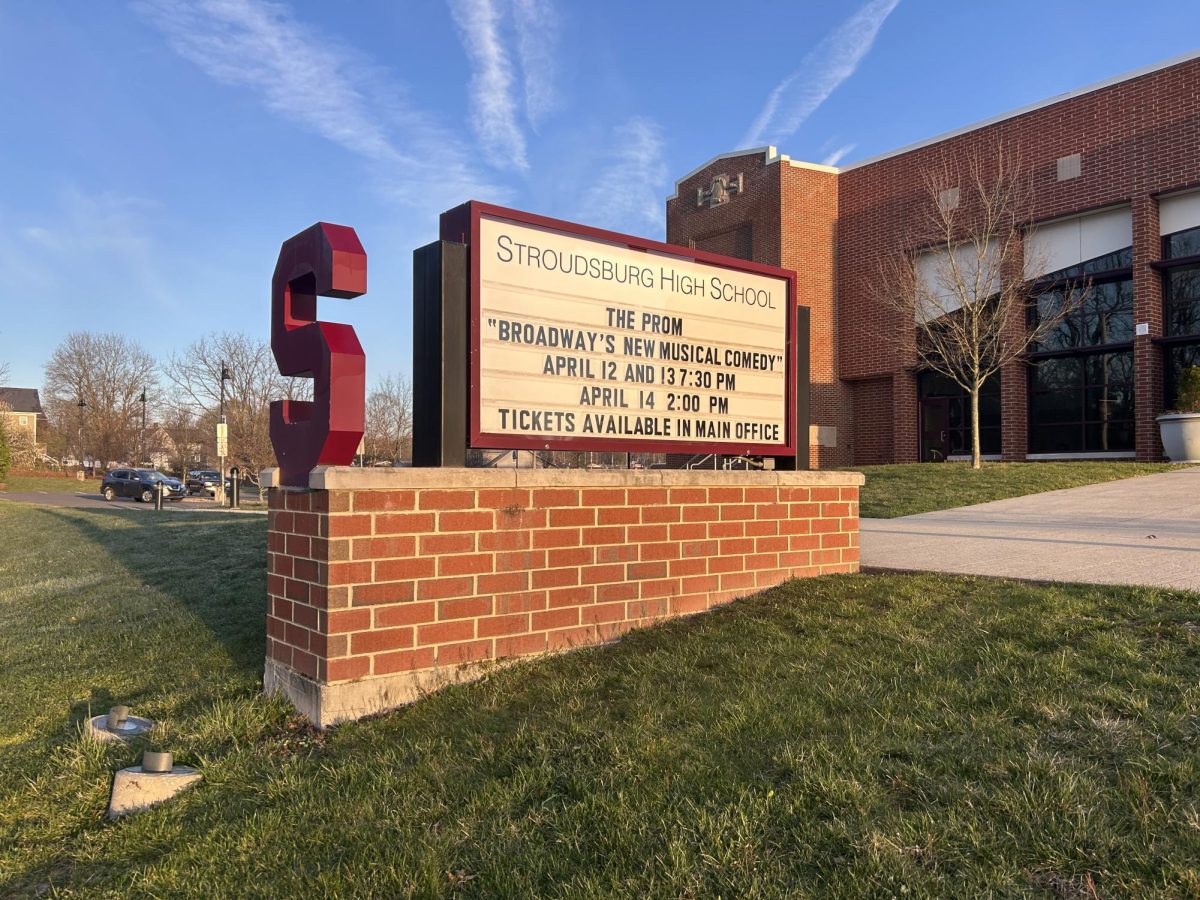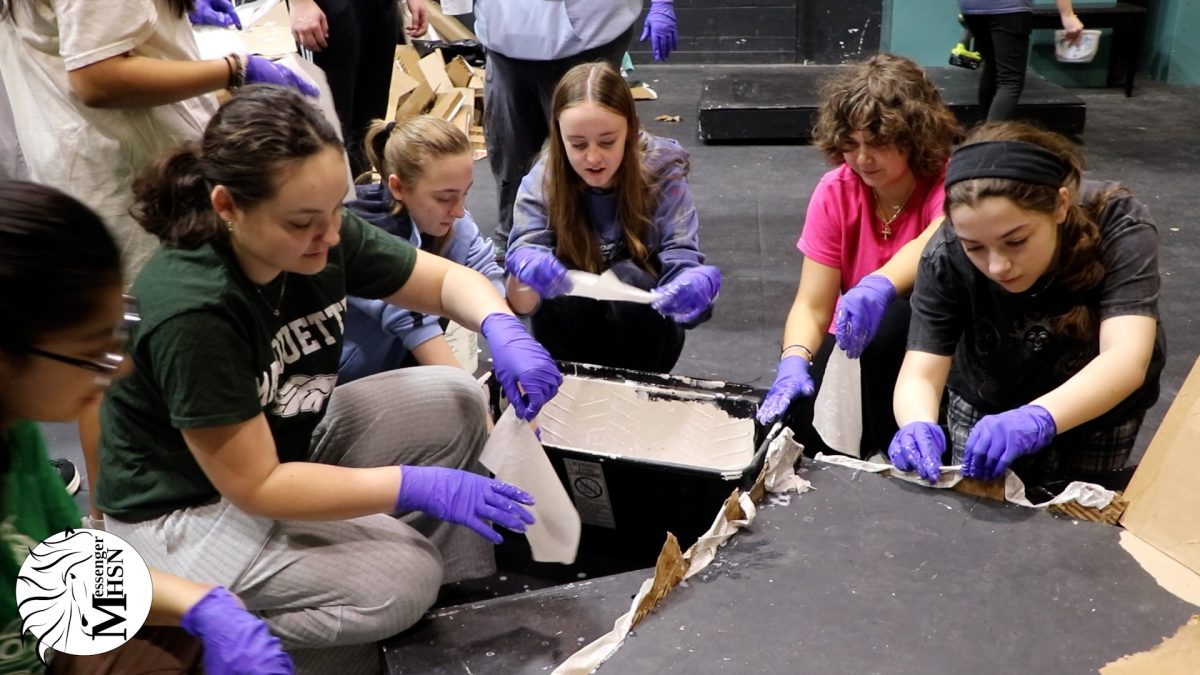Through a screen, we might feel an inch away from others, but in reality, we are miles apart. With turned-off cameras hiding forbidden resources, the absence of eyes directly watching a student’s every move during a test can result in an increased temptation to cheat.
It is hard to ensure academic integrity in a largely online world. Even more difficult can be defining what constitutes cheating. Dr. Gregg Shoultz, director of PK-12 online learning for the ICCSD, describes cheating as, “passing someone else’s work off as your own.” From plagiarism of work found online to messaging friends for answers, most methods involve the use of the electronic devices students carry with them everywhere.
However, it is not always the students’ intentions to purposefully follow a path of academic dishonesty. With Canvas, for instance, the distinction between assignments and assessments has become blurred, leaving some students confused about the boundaries of resource usage. Teachers’ expectations of how students will act in combination with ethical concerns have obscured what counts as cheating. Online student Shivy Mannengi ’23 acknowledges how complicated this moral line can be.
“I guess there’s a question of ethics because they’ll tell us not to [cheat],” Mannengi said. “I think most students find themselves [cheating] anyways because it just turns into making sure they get a good grade.”
I think most students find themselves [cheating] anyways because it just turns into making sure they get a good grade.
— Shivy Mannengi ’23
Although cheating was present even before school moved online, it has risen with the increase in remote assessments. According to The Washington Post, the online proctoring service ProctorU saw a rise in cheating from less than 1 percent to above 8 percent from April to June of 2020 during the start of remote testing due to COVID-19. This has raised the question of whether the difficulty level of tests changes depending on where they are administered. Hybrid student Lydia Cui ’22 compares her experiences taking online and in-person tests.
“In-person tests are easier for me because even though you can cheat on an online test, it’s just easier to write down all my work, and then it’s a lot easier for teachers to give partial credit, which I personally like,” Cui said.
Some classes continue to use the traditional paper-pencil testing format while others have opted for virtual methods despite being in an in-person classroom. For hybrid student Razan Babikir ’22, this change did not go unnoticed.
“Personally … I’m way more comfortable using pencil and paper, but a lot of teachers … try to limit that,” Babikir said. With 55.3 percent of West students enrolled in the hybrid learning model, many wonder whether online students have an unfair advantage during tests due to easier access to cheating resources.
To combat this, teachers have searched for ways to provide relatively equal assessments to accommodate for the different testing environments while continuing to challenge students.
Science teacher Michelle Wikner decided to create modified tests for her online students. However, she believes there are still disparities in this system. Hybrid students are not permitted to use notes during the test and are constantly supervised, while online students have no eyes watching what they do. In an attempt to equalize the assessments, Wikner created open note but time-constricted exams for her remote students. She originally predicted that her online students would perform better because of cheating, but found that her hybrid students ended up performing better.
“They did really, really well, and they got done faster than [online students]…,” Wikner said.
Spanish teacher Amy Seidel doesn’t believe the main issue is whether students are being tested equally. Rather, she worries that online students aren’t receiving an equal amount of opportunity and guidance.
“The real struggle is connecting with online students when they are struggling with their assessments,” Seidel said.
To compensate for this, Seidel has changed her mindset on student evaluation.
“I am really looking at assessments in a different light this year. I am allowing open notes and retakes. I want students to learn from their assessments and really show what they know, even if it means it takes them several attempts,” Seidel said.
I want students to learn from their assessments and really show what they know, even if it means it takes them several attempts.
— Amy Seidel, Spanish teacher
Consequently, when teachers have trouble providing this guidance, students often turn to cheating. Although finding shortcuts may offer immediate relief, some teachers are worried that cheating will prevent students from actually learning the material.
“Students are really cheating themselves…in finding someone else to do their work rather than constructing the knowledge that the assignment requires,” Shoultz said.
The biggest concern for AP teachers, whose purpose is to prepare students to take AP exams in the spring, is that students are simply submitting work at the expense of understanding the material.
“I want students to learn things, and I’m afraid that people aren’t learning things very well because they’re relying too much on other sources.” Wikner said.
Whether in-person or online, there are several reasons a student may choose to be academically dishonest. Teachers predict that pressure, laziness and frustration over assignments are all reasons that students may turn to cheating. Prior to the pandemic and subsequent change of the schooling situation, students already found themselves facing pressure to succeed in West’s competitive environment.
“Classes are moving so fast; the combination of understanding the material and completing all assignments… all of it adds up and it just takes so much time,” Mannengi said. “It’s like the students almost have to [cheat].”
Moreover, Babikir feels less accountable when taking a test online, which decreases her motivation and pressure to perform well.
“When I’m taking [a test] online, I’m like ‘Oh god, I hate this tab. It’s been open for the last 15 minutes or something. I can’t figure this question out. I’m just going to write something. Whatever. It’s just a computer,’” Babikir said.
For Babikir, the ultimate reason for cheating comes down to procrastination.
“I was always a procrastinator,” Babikir said, “but this year, I think I took it to a whole new level.”
After a long day of in-person school, Babikir has very little motivation left to start working on homework right away. In the end, she feels procrastination can cause students to look for answers outside of their own knowledge.
We hope by giving students meaningful and authentic tasks, they will not be as inclined to look for shortcuts.
— Dr. Gregg Shoultz, director of PK-12 online learning
Despite cheating being almost inevitable in an online setting, teachers still make an effort to prevent it. Resources such as lockdown browsers and websites that check for plagiarism are provided to teachers. However, Wikner chooses to opt-out of imposing such restrictions because she believes it is part of the student’s responsibility to make the best choices for themselves.
“At some point it’s going to be quicker if you just learn it and get it done,” Wikner said.
In contrast, Seidel believes students may use notes during online tests so long as it helps them learn the material.
“I hope that [the students] see the task as more manageable and practice the skills we have learned and reviewed rather than trying to do something that is out of their comfort zone completely,” Seidel said.
Shoultz agrees that the most effective method of preventing cheating and promoting learning is to adapt to the current learning situations.
“We hope by giving students meaningful and authentic tasks, they will not be as inclined to look for shortcuts,” Shoultz said.
This story was originally published on West Side Story on November 22, 2020.




























![IN THE SPOTLIGHT: Junior Zalie Mann performs “I Love to Cry at Weddings,” an ensemble piece from the fall musical Sweet Charity, to prospective students during the Fine Arts Showcase on Wednesday, Nov. 8. The showcase is a compilation of performances and demonstrations from each fine arts strand offered at McCallum. This show is put on so that prospective students can see if they are interested in joining an academy or major.
Sweet Charity originally ran the weekends of Sept. 28 and Oct. 8, but made a comeback for the Fine Arts Showcase.
“[Being at the front in the spotlight] is my favorite part of the whole dance, so I was super happy to be on stage performing and smiling at the audience,” Mann said.
Mann performed in both the musical theatre performance and dance excerpt “Ethereal,” a contemporary piece choreographed by the new dance director Terrance Carson, in the showcase. With also being a dance ambassador, Mann got to talk about what MAC dance is, her experience and answer any questions the aspiring arts majors and their parents may have.
Caption by Maya Tackett.](https://bestofsno.com/wp-content/uploads/2024/02/53321803427_47cd17fe70_o-1-1200x800.jpg)
![SPREADING THE JOY: Sophomore Chim Becker poses with sophomores Cozbi Sims and Lou Davidson while manning a table at the Hispanic Heritage treat day during lunch of Sept 28. Becker is a part of the students of color alliance, who put together the activity to raise money for their club.
“It [the stand] was really fun because McCallum has a lot of latino kids,” Becker said. “And I think it was nice that I could share the stuff that I usually just have at home with people who have never tried it before.”
Becker recognizes the importance of celebrating Hispanic heritage at Mac.
“I think its important to celebrate,” Becker said. “Because our culture is awesome and super cool, and everybody should be able to learn about other cultures of the world.”
Caption by JoJo Barnard.](https://bestofsno.com/wp-content/uploads/2024/01/53221601352_4127a81c41_o-1200x675.jpg)






